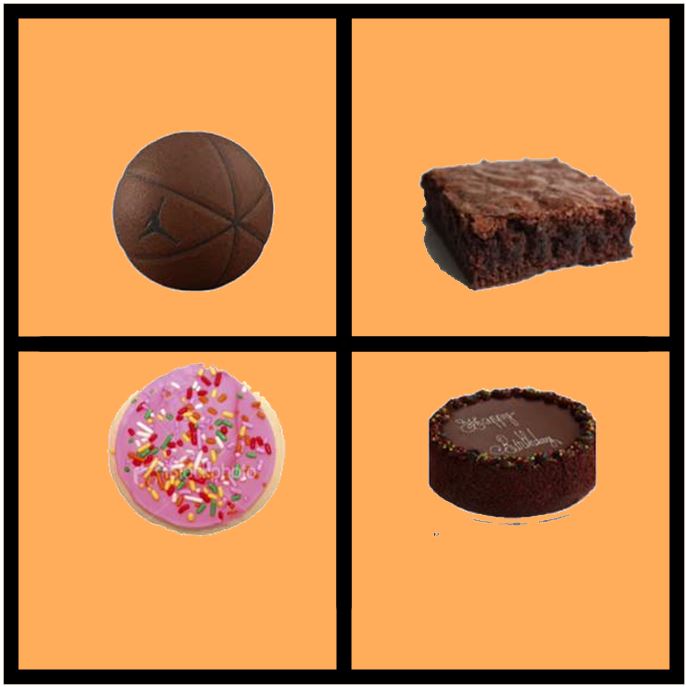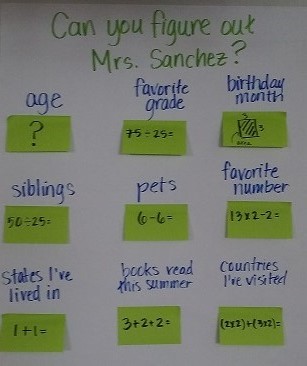It’s hard to believe it’s June 8th. The last day of school for students is June 21st, which is crashing in! As I look back over the year, I want to be sure to capture some of the learning that’s been important so that it doesn’t get lost when thinking about and planning for next year. Here is the first in what I hope will be a series of posts.
Routines for Reasoning: Fostering the Mathematical Practices in ALL Students (#fosteringMPs) by Grace Kelemanik (@GraceKelemanik), Amy Lucenta (@AmyLucenta), and Susan Creigthton is a book that has pushed my own thinking and taken my work to a deeper level. It amplifies the Standards for Mathematical Practice (SMPs) which can get neglected in pursuit of content. I contend, as do the authors, that you aren’t fully teaching the Common Core if you aren’t engaging students in the SMPs. This book is about teaching math by thoughtfully and deeply engaging students in the SMPs and doing so in ways that support each/ALL learners and give them tools to become independent in using them. Routines for Reasoning takes the SMPs to a much deeper level giving ways to empower students to “Think Like Mathematicians”. From the “Avenues of Thinking” to the Four Essential Instructional Strategies, to the actual routines in the book, I will be unpacking my own learning of this book for a long time.
The authors of Routines for Reasoning make the case for three Avenues of Thinking: quantities and relationships (SMP 2), structure (SMP 7), and repetition (SMP 8). These three avenues support SMP 1: making sense of problems and persevering in solving them. If students and teachers aren’t doing that then the others aren’t happening. The remaining SMPs (3, 4, 5 and 6) support each of these avenues. For more information you can watch this Ignite. Herein begins the brilliance of their work.
Each of the routines in this book are organized to support student learning giving students independent think time, partner discussion, whole group discussion and independent reflection. Additionally, each routine incorporates Four Essential Instructional Strategies, which keep focus on the mathematical thinking while providing access to learners. They are:
- Ask-Yourself Questions
- Annotations
- Sentence Frames and Sentence Starters
- The Four Rs: repeat, rephrase, reword and record
They seek to support learners in gaining access to the math and in giving them tools that can be used to become more independent learners over time. If we want students talking productively about their mathematical ideas then we need to teach them how and what to share, orient them to one another’s thinking and to the mathematics.
I think these Four Essential Instructional Strategies are foundational. In fact, I believe they should be a foundation in all professional learning related to math pedagogy. With that in mind, I have been intentional about calling them out and using them our work with Observing for Evidence of Learning (OEL) Labs (a structure similar to Learning Labs/Math Labs work the University of Washington and others are doing, or the studio lab idea that Teachers Development Group offers) as well as other forms of professional learning.
Ask-Yourself Questions
In each of the routines in this book students are introduced to “Ask–Yourself Questions” so that students think mathematically and can internalize these questions to begin to ask themselves whenever they are doing math. Teachers use them to model how these questions can guide our mathematical thinking. Some examples of Ask-Yourself Questions are:
Think Quantities
- What can I count?
- What can I measure?
Think Structure
- Does this problem remind me of another I’ve solved?
- How can I chunk this express/visual/number?
Think Repetition
- Is there a process I keep repeating?
- Do I keep repeating the same set of calculations?
When working alongside teachers and students we worked together to create a poster, so to speak, of the above 6 questions. Teachers referred their students to them when they got stuck, and excitedly shared that students successfully used these prompts to get themselves unstuck! (Side note: we had to take the posters down during our state testing. That’s fodder for another blog post.) What I pay attention to when sharing Ask-Yourself Questions with students and teachers is that they become a problem-solving tool that is much more mathematically powerful than using “key words” a practice I am committed to eradicating.
Annotations
“Annotations can help you draw students’ attention to important connections or relationships in a problem” (p. 33). Use of color, specifically, can help students make connections between different representations and mathematical ideas. Annotations can become a tool for mathematical thinking (SMP 5), allows students to be more precise (SMP 6) and can be used to support mathematical arguments (SMP 3).
Their use of annotations makes me think more critically about how I record student thinking in a math routine like number talks or number strings. I’ve always seen color as powerful and that our recording matters, but this year I’m finetuning this attention to ways our recording/annotations help support students seeing connections between students’ thinking and the structure of their thinking. For example, intentionally showing two students’ different ways of adding on shown on a number line and stacking them in order to make it easier for students to see the similarities and differences in their thinking.
Sentence Frames and Sentence Starters
The sentence frames and starters used in Routines for Reasoning are intended to support students staying focused on the kinds of mathematical thinking that you want students engaging in and support those who struggle with the language to use and support them in ways of collecting their ideas. They are also used to focus discussions between partners and with the whole group.
This year I’ve focused more on the use of sentence frames and starters to focus conversation in classrooms. I mentioned earlier that students need to learn how and what to share. One way we’ve been doing this is giving more specific prompts and posting them so that students can refer to them. For example, when wanting students to see the relationship between problems in a number string, we asked them specifically, “How can I use the previous problem to help me solve …?” By verbally and visually projecting this prompt, it helped focus students’ attention to the connections between problems and their underlying structure and their discussions were richer.
The Four Rs: repeat, rephrase, reword and record
The Four Rs are important in helping students stay focused in and make sense of the various discussions that occur throughout a routine. “…it falls upon you to facilitate discussions with your students in each of the routines, and this strategy provides a structure for helping you do so” (p. 36) It goes on to highlight some teacher question and decision points as well as actions to take (see below). The Four Rs are easily generalizable across discussions. That said, this strategy is the one that requires the most in-the-moment decision making (p. 37). This strategy serves as a way to amplify the mathematics and the mathematicians in discussions. It also serves as an anchor, in terms of the recording of student ideas and their use as an artifact, or anchor of their understanding.
Teacher Questions and Decision Points:
Did all my students hear the idea?
- If not, call on a student to repeat what was said.
Did all my students understand the idea?
- If not, call on one or two students to rephrase what was said in their own words
Is now the time to press for precision of language?
- If so, then reword saying the idea again substituting mathematical or academic language that you want students to develop.
What do I need to capture in the language and thinking for reference by my students?
- Record by publicly capturing the salient ideas using language you want students to use.
Of all the strategies this is probably the most complex to incorporate for me because I can only plan so much for it, and in the moment, I might be attending to 17 other things. I think this strategy has such potential for elevating discussions. It feels a lot like pushing JELL-O up a hill: I can attend to maybe 2 of the questions above but not all 4, at least so it feels natural, which is why I want to make it a focus of my own work next year.
Lots of things to think about! I’m curious what you are thinking about as you reflect on your year? What this post causes you to think about?
Stay tuned for my next post. Reflections on Learning—Part II: Routines for Reasoning and Capturing Quantities …



